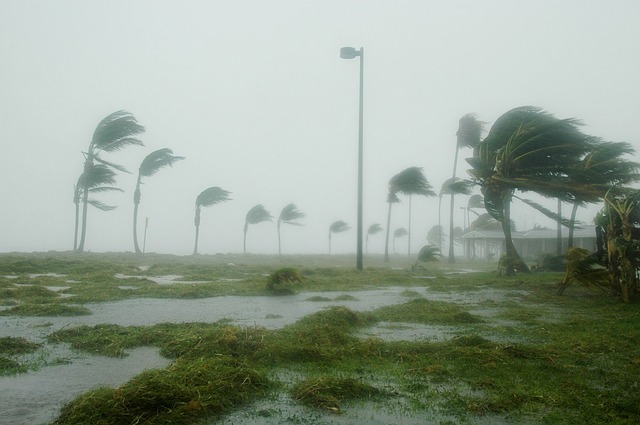[av_heading heading=’3 essencial things that you need to know about hurricanes’ tag=’h3′ style=” size=” subheading_active=” subheading_size=’15’ padding=’10’ color=” custom_font=”][/av_heading]
Hurricanes are one of the most feared natural events, and they are the outcome of a series of atmospheric and geographic factors. Almost every time a region is hit by such phenomenon, the effects are quickly felt. Unfortunately, homes and natural areas get shattered and wiped out and, in some cases, several fatalities are registered.
See also: 4 simple steps to get yourself ready for a hurricane.
1. What is a hurricane?
According to the National Oceanic and Atmospheric Administration, hurricanes, or tropical cyclones, are a rotating low-pressure atmospheric system. They form themselves over the ocean, and the wind speed exceeds 74 mph (when less than that, among 39 and 74 mph, the phenomenon is considered a tropical storm). Furthermore, its diameter encompasses hundreds of miles.
It is often formed in the Atlantic Ocean, in the Caribbean region, in the Gulf of Mexico and in the eastern part of the North Pacific Ocean. It happens as well in the center of the North Pacific Ocean, albeit less frequently.
2. How are they formed?
Hurricanes are formed, as we have previously said, over oceanic regions. They appear when the oceanic waters get warmer, with temperatures equal or higher than 80 Fahrenheit or 27 Celsius. With those temperatures there is a high evaporation rate. Thus, with the production of a large amount of humidity, which is then converted into air masses, hurricanes are born.
At the spot where water evaporates, air pressure is lower when compared to its surroundings. This causes the air to move from the areas where the pressure is higher to the hurricane’s center. This air movement always presents itself in a circular shape. In the northern hemisphere it rotates clockwise and anticlockwise in the southern hemisphere. Such phenomenon is attributed to Coriolis Effect, which manifests itself thanks to the Earth’s rotation.
The center of the storm is called the hurricane’s eye, which has something around 15 miles in diameter. That area is very hot, there are no clouds and no rain in it. Through it, water keeps evaporating, feeding the hurricane.
The hurricane begins to dissipate usually when it reaches dry land regions. In these places, which have a cooler surface, thus capable of stopping the constant evaporation of water, the hurricane loses its strength. However, it will still cause serious damage.
3. What are the categories of hurricanes?
[av_image src=’http://aaabrowardhurricane.com/wp-content/uploads/2016/07/storm-1209365_640.jpg’ attachment=’521′ attachment_size=’full’ align=’center’ animation=’no-animation’ link=” target=” styling=” caption=” font_size=” appearance=”][/av_image]
Hurricanes with unremitting winds of 75 mph or more were classified by Herbert Saffir and Robert Simpson, in the beginning of the 70s. They developed the Saffir-Simpson Wind Scale as a measure of intensity of a hurricane. It is a 1 to 5 rating, with 5 being the most devastating. Let’s check the classification:
Category 1
Hurricane winds 74-95 mph
The potential damage from a hurricane comprised in this category is the lowest, not causing any damage related to falling trees, nor is it capable of affecting building structures. Its main consequence happens in coastal regions, where there is a higher chance of a small flood occurring.
Category 2
Hurricane winds 96-110 mph
The potential damage is related to the destruction of windows, doors and roofs. Trees can be uprooted due to the force of the winds. Besides causing damage to agriculture and boats which are anchored along the coastline. There is a chance of flooding in coastal areas.
Category 3
Hurricane winds 111-130 mph
It can cause structural damage to small buildings and homes, shattering constructions made of wood. Floods near the coast destroy small structures and damage the bigger ones, besides causing flooding of land as well.
Category 4
Hurricane winds 131-155 mph
They can cause serious havoc in populated areas, with houses and buildings at risk of being toppled by the winds. Torrential rains cause flooding in enormous areas of land, causing major flooding. Hence, there is the need to carry out a large-scale evacuation of all those who live in the regions which will be hit by the hurricane.
Category 5
Hurricane winds 156 mph and up
Hurricanes of this type are deemed as “rare” bay meteorologists, as they can destroy all that stands in their way. Coastal areas can be flooded up to ten kilometers, with the collapse of power and health facilities. The evacuation of all those who live near the coast is mandatory.
As we have already said in this article, being alert is vital. Sign up here for our newsletter, and we will always keep you updated on any incidence of hurricanes of this type in your region.


